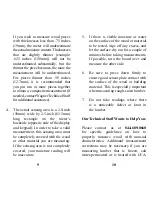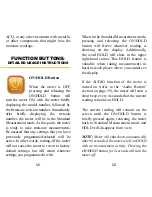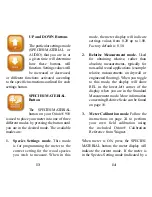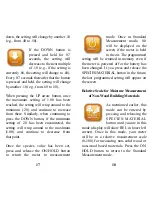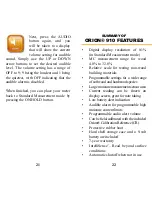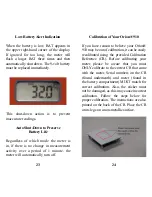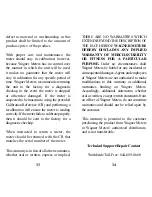
9
10
5. If there is visible moisture or water
on the surface of the wood or material
to be tested, wipe off any excess, and
let the surface dry out for a couple of
minutes before taking measurements.
If possible, turn the board over and
measure the other side.
6. Be sure to press down firmly to
ensure good sensor plate contact with
the surface of the wood or building
material. This is especially important
when measuring rough-sawn lumber.
7. Do not take readings where there
is a noticeable defect or knot in
the lumber.
Our Technical Staff Wants to Help You:
Please contact us at
844-689-0660
for specific guidelines on how to
properly measure wood with unusual
characteristics. Additional measurement
corrections may be necessary if you are
measuring lumber that is frozen, salt
water-permeated, or is treated with CCA,
If you wish to measure wood pieces
with thicknesses less than .75 inches
(19mm), the meter will underestimate
the actual moisture content. Thicknesses
that are slightly thinner (example:
.625 inches (15.9mm)) will not be
underestimated substantially, but the
thinner the piece becomes, the more the
measurement will be underestimated.
For pieces thinner than .50 inches
(12.7mm), it is recommended that
you put two or more pieces together
to obtain a composite measurement (if
needed, contact Wagner Technical Staff
for additional assistance).
4. The actual sensing area is a 2.0-inch
(50mm) wide by 2.5-inch (63.5mm)
long rectangle on the meter’s
backside (opposite side of the display
and keypad). In order to take a valid
measurement, this sensing area must
be completely covered with the wood
or other material you are measuring.
If the sensing area is not completely
covered, your moisture reading will
be inaccurate.
Содержание Orion 910
Страница 1: ...INSTRUCTION MANUAL ...
Страница 20: ...35 36 Notes Notes ...







